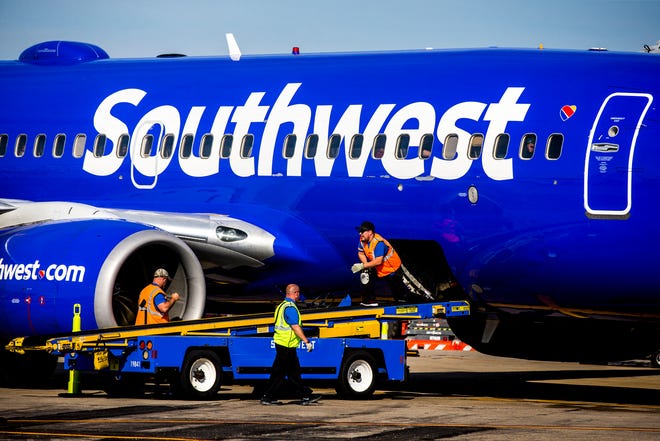Escape To The Countryside: Choosing The Right Location For Your Needs

Table of Contents
Defining Your Countryside Lifestyle
Before you even begin browsing rural property listings, it's vital to define what "escape to the countryside" means to you. This self-reflection is the cornerstone of a successful rural relocation.
Lifestyle Priorities: What Kind of Country Life Do You Envision?
What aspects of country life are most important to you? The answers will greatly influence your location choices. Consider these key factors:
- Outdoor Activities: Are you an avid hiker, cyclist, angler, or gardener? Proximity to trails, rivers, or fertile land will be paramount.
- Community Engagement: Do you value strong community ties? Look for villages with active community groups, regular events, and friendly locals.
- Proximity to Amenities: How important is access to shops, healthcare, and schools? While rural life often means a slower pace, you'll need to balance tranquility with convenience.
- Work Opportunities: If you plan to continue working, consider the availability of remote work options or the commute to nearby towns with job markets.
- Family Proximity: Do you need to be close to family and friends? Consider how far you're willing to be from support networks.
This introspection is crucial. Without a clear vision of your ideal countryside lifestyle, your search will be scattered and potentially unsuccessful.
Budget Considerations: The Financial Realities of Rural Living
While dreaming of idyllic country life is exciting, facing the financial realities is equally important. A rural relocation often involves significant costs beyond the purchase of a rural property.
- Property Prices: Research average property prices in your areas of interest. Prices can vary dramatically based on location, size, and condition.
- Property Taxes and Utilities: Factor in property taxes, which can be higher or lower than in urban areas depending on the location. Utilities, particularly heating, can also be more expensive in rural settings.
- Maintenance Costs: Older properties often require more maintenance. Budget for repairs, renovations, and ongoing upkeep.
- Transportation Costs: Consider transportation costs. Public transport might be limited, requiring car ownership and associated expenses.
- Commute Expenses: If you commute to work, factor in fuel, tolls, and time costs.
Researching Potential Countryside Locations
Once you've defined your lifestyle and budget, you can start researching potential countryside locations. This stage involves thorough investigation and careful consideration.
Location Specifics: Finding Your Perfect Rural Landscape
What kind of landscape appeals to you? The beauty of country living lies in its diversity.
- Regional Characteristics: Explore different regions and their unique characteristics. Do you prefer rolling hills, rugged mountains, or a coastal location? Consider the climate, rainfall, and potential for extreme weather.
- Proximity to Cities: How close do you want to be to urban centers? Consider the balance between rural tranquility and access to city amenities.
- Access to Healthcare and Schools: Research the availability and quality of healthcare services and schools in your potential locations. This is particularly important if you have children or require regular medical attention.
- Job Market: If you're not working remotely, explore the local job market in your target areas.
Essential Amenities and Services: Balancing Tranquility with Convenience
While escaping to the countryside often means a slower pace of life, it’s important to ensure access to essential amenities and services.
- Healthcare Access: Investigate the proximity and availability of doctors, hospitals, and other healthcare providers.
- Educational Facilities: If you have children, research the quality of local schools and their proximity to your potential home.
- Shopping and Grocery Stores: Assess the availability of grocery stores, pharmacies, and other essential shops. Consider the frequency of grocery shopping trips and the distance you are willing to travel.
- Transportation Links: Research public transportation options, or the need for a car, and the quality of roads in the area.
- Internet Access: Reliable internet access is crucial for many, especially for those working remotely. Check availability and speeds in different areas.
Visiting Potential Locations and Immersing Yourself
The final, and arguably most important, step is to visit your shortlisted locations and immerse yourself in the local environment.
Experiencing the Area: Beyond the Picturesque Postcard
Don't rely solely on online research or photographs. Spend time in your potential locations to get a true feel for the community and environment.
- Seasonal Variations: Visit during different times of the year to experience seasonal variations in weather, light, and community activities.
- Community Interaction: Talk to locals about their experiences living in the area. Engage in conversations about local life, challenges, and opportunities.
- Local Events: Attend local events, festivals, or farmers' markets to get a sense of community spirit and local culture.
Exploring the Neighborhood: Understanding the Local Vibe
Once you have a feel for the broader region, focus on specific neighborhoods within those areas.
- Neighborhood Atmosphere: Drive around potential neighborhoods at different times of the day and week to observe the overall atmosphere and activity levels.
- Proximity of Neighbors: Consider the proximity of neighbors and the types of properties in the area. Do you prefer a secluded setting or a more populated neighborhood?
- Local Infrastructure: Observe the local infrastructure, including road conditions, street lighting, and community amenities.
- Crime Statistics and Community Engagement: Check local crime statistics and assess the level of community engagement and safety.
Conclusion
Choosing the right location for your countryside escape is a crucial step in ensuring a happy and fulfilling transition. By carefully considering your lifestyle priorities, researching potential locations thoroughly, and immersing yourself in the community, you can find the perfect rural retreat that meets your needs. Remember to factor in all aspects of rural living, from financial considerations to community engagement, to ensure a smooth and enjoyable relocation.
Start planning your escape to the countryside today! Research different areas that fit your ideal countryside lifestyle, and begin your journey toward a more peaceful and fulfilling life. Don't forget to factor in all aspects of rural living when making your decision.

Featured Posts
-
 Im Fokus Die Leistungen Von Golz Und Brumme In Essen
May 24, 2025
Im Fokus Die Leistungen Von Golz Und Brumme In Essen
May 24, 2025 -
 H Nonline Sk Hospodarsky Pokles V Nemecku Dosledky Pre Pracovny Trh
May 24, 2025
H Nonline Sk Hospodarsky Pokles V Nemecku Dosledky Pre Pracovny Trh
May 24, 2025 -
 Dar Vienas Porsche Elektromobiliu Ikrovimo Centras Europoje Issami Informacija
May 24, 2025
Dar Vienas Porsche Elektromobiliu Ikrovimo Centras Europoje Issami Informacija
May 24, 2025 -
 Avoid Memorial Day Travel Chaos 2025 Flight Booking Guide
May 24, 2025
Avoid Memorial Day Travel Chaos 2025 Flight Booking Guide
May 24, 2025 -
 Porsche Cayenne Ev 2026 Leaked Spy Shots And Speculations
May 24, 2025
Porsche Cayenne Ev 2026 Leaked Spy Shots And Speculations
May 24, 2025
Latest Posts
-
 Macrons Policies Faced Internal Opposition Former French Pm Speaks Out
May 24, 2025
Macrons Policies Faced Internal Opposition Former French Pm Speaks Out
May 24, 2025 -
 France New Proposals For Punishing Underage Criminals
May 24, 2025
France New Proposals For Punishing Underage Criminals
May 24, 2025 -
 Proposed Changes To Juvenile Sentencing In France
May 24, 2025
Proposed Changes To Juvenile Sentencing In France
May 24, 2025 -
 Gaga And Polansky Couples Arrival At Snl Afterparty
May 24, 2025
Gaga And Polansky Couples Arrival At Snl Afterparty
May 24, 2025 -
 French Pms Past Disagreements With Macron Revealed
May 24, 2025
French Pms Past Disagreements With Macron Revealed
May 24, 2025
